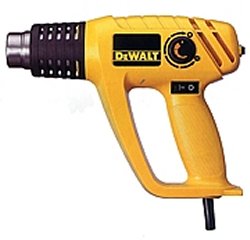Try and think of a worse job than removing wall paper and removing paint will probably spring to mind. This can be a very tedious and at times soul destroying job, but if you are insistent on removing the paint then here is my advice on the subject.
WARNING
Paint found in buildings built before 1960 could possibly contain Lead, although lots of people used to lick our cots that were painted with lead paints and although we have drunk water that has passed through lead pipes we should if possible avoid inhaling or ingesting lead or paint containing lead!
Lead can make you very ill as I once found out, at an early age I loved playing with Lead as it is so malleable. We had had some work done on the roof and the roofers left some Lead lying around on the floor and I thought I would entertain myself by bashing the Lead into small lumps with my hammer. Unfortunately I must have had a cut or something and developed Lead poisoning, which means staying in hospital for a few days. It's not very pleasant and can cause Brain damage especially to children so don't take any chances or you might end up like me!
Special kits which test for Lead in paints are available but I have never used one. I normally air on the side of caution and assume that the paint does contain Lead!
DO NOT-
- Burn off the paint with a blowtorch as this produces Lead fumes.
- Sand the paint either by hand or with a power sander as this will spread the lead dust all over the property.
- Vacuum the removed paint as lead particles will pass through the filter into the atmosphere.
If you find that you must remove the paint then use a chemical paint stripper.
Basic economics and common sense
Before attempting to remove any paint from a object it is often a good idea to think about replacement of the object especially if you are paying someone! Obviously if you have a period home and wish to keep the character then you have not much choice in the matter but with newer properties replacement is often the best choice and is often cheaper in the long run. Having stripped paint in the past I now refuse to do it as I hate it with a passion and I am a firm believer in the principle that if it has been painted previously then paint it again, rather than stripping it!
For stripping paint you normally only have two choices, either remove the paint by causing it to bubble away from the surface underneath by applying heat or a chemical paint remover. If you are removing paint from stone then you could of course get it sandblasted.
Hot air

If you decide to remove the paint with heat then a electric heat gun is preferred over a blow torch due to safety reasons, try telling your insurance company that your house burnt down because you set fire to it whilst using a blow torch and it is unlikely that they will pay out! You are going to need a good quality scraper and a pair if goggles as paint particles often fly off in all directions. Hold the heat gun close to the paint until the paint bubbles then remove the paint with the scraper, this is often not easy and some paints do not bubble at all and simply makes a mess of the paint and makes it difficult to remove. Dust sheets are needed as it is extremely difficult to remove from carpets etc.
Chemical strippers
Paint strippers contain chemicals that loosen paint from surfaces. These chemicals can harm you if not used properly. Some paint stripping chemicals can irritate the skin and eyes, or cause headaches, drowsiness, nausea, dizziness, or loss of coordination. Some may cause cancer, reproductive problems, or damage of the liver, kidney, or brain. Others catch fire easily. Proper handling and use of paint strippers will reduce your exposure to these chemicals and lessen your health risk. Follow the manufacturers instructions and wear good quality suitable gloves and goggles.



